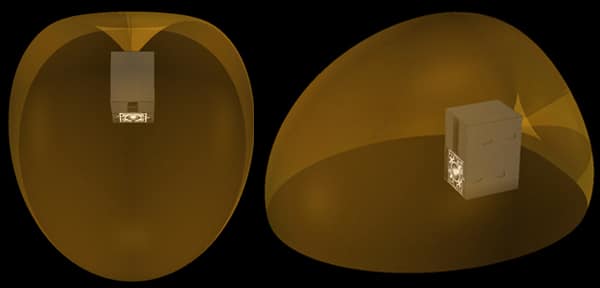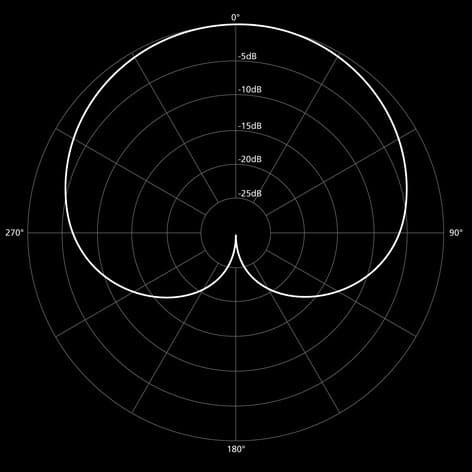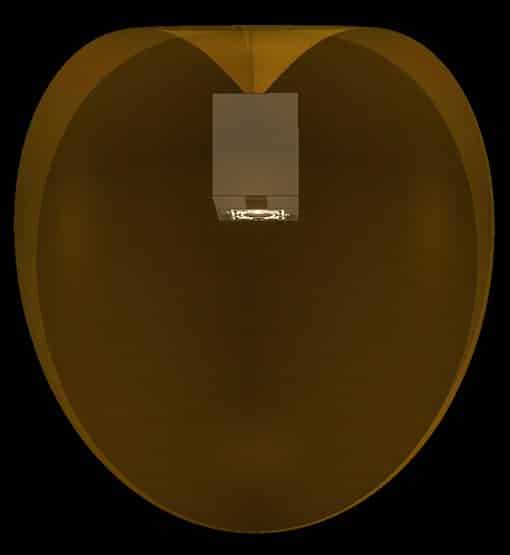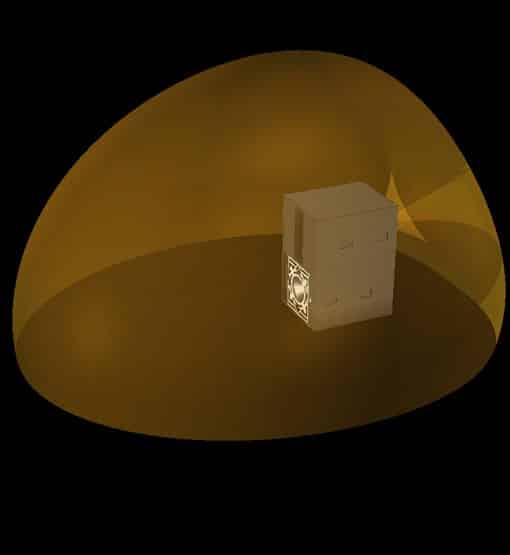

Cardioid, or heart-shaped, refers to the shape of the coverage, or pickup, of a transducer. A cardioid microphone picks up sounds in front of it more effectively than it picks up sounds behind it. A cardioid subwoofer or subwoofer array produces a heart-shaped coverage pattern in which levels are louder to the front of it and lower behind it.
There are several methods for achieving a cardioid pattern but the principles of the function depend upon signals from multiple sources being aligned in one direction and mis-aligned in the other.

The waves of sound radiate away from a subwoofer in a largely spherical pattern unless they are interfered with by a surface or by opposing pressure. Positive pressure waves can be canceled by negative pressure waves, so it’s possible to use a subwoofer to cancel the output of another subwoofer.
If you’ve ever hooked up one subwoofer in reverse polarity to another, you know how effective the cancellation can be. The trick with a cardioid speaker or cardioid array is to use spacing and delay (aka time offset) so that the cancellation is targeted in only one direction rather than cancelling the output everywhere.
The sound pressure level measured in the direction of cancellation is reduced and the sound pressure level measured in the opposite direction is increased. When these measurements are graphed on a polar plot, the graph appears to be heart-shaped, so it is called a Cardioid Pattern.
Of note, a Polar Plot refers to a graph that shows sound pressure level measurements with the lowest level in the center and the highest level to the outer edge, so louder measurements are graphed farther from the center and quieter measurements are graphed closer to the center. The source, the speaker, is imagined to be at the center with the perspective of the viewer being above, looking down. (Specifically, this would describe a horizontal coverage polar plot.)

Polar plots are measured at individual frequencies or frequency bands because they graph output relative to position rather than output relative to frequency so there would be slightly differently shaped graphs through the operational range of the loudspeaker in question.
The result of a properly deployed Cardioid Array is the ability to focus more bass where you want it and have less go where you don’t. That can mean keeping bass away from neighbors, off stages, away from turntables or keeping it from reflecting off walls and causing destructive interference elsewhere in a room.

A cardioid speaker or array requires more parts, more processing and ultimately more money than an ordinary subwoofer system. Two identical subwoofers used side-by-side in a conventional setup would deliver more output to the front, and also to the rear, than the same two subwoofers used in a Cardioid setup, however, in the Cardioid setup there will be MUCH less output to the rear and only slightly less output to the front.
There are “passive cardioid” loudspeakers that use tuned ports on opposite sides on the enclosure to create the cardioid effect however their operational bandwidth and output is limited relative to active cardioid systems.
The response graph above shows the forward vs rearward radiation of a pair of subs in cardioid configuration. The upper (yellow) line is the output SPL at one meter from the audience side, or what you might call the front of the cabinets, and the lower (pink) line is the output SPL at one meter from the stage side, or back of the cabinets. The graph indicates that the level reduction is over a large range of frequencies.
The effectiveness does taper off below 30Hz because the wavelengths get too long for the offset distance of the depth of only one box to control. Nevertheless, over the majority of the operational bandwidth of the test boxes, there is a big difference in what you hear and experience behind vs in front.
One of the advantages to cardioid-configured subwoofers indoors, besides keeping levels down behind them, is virtually eliminating the reflections that come from walls behind the subwoofers. Those reflections can cause big, nasty dips in the frequency response observed in audience and dance floor areas. Those dips can cancel far more energy than what you lose by dedicating one of your subwoofers to backwards-canellation-duty, aka cardioid mode.

boxes stacked vertically.

seen from above.























